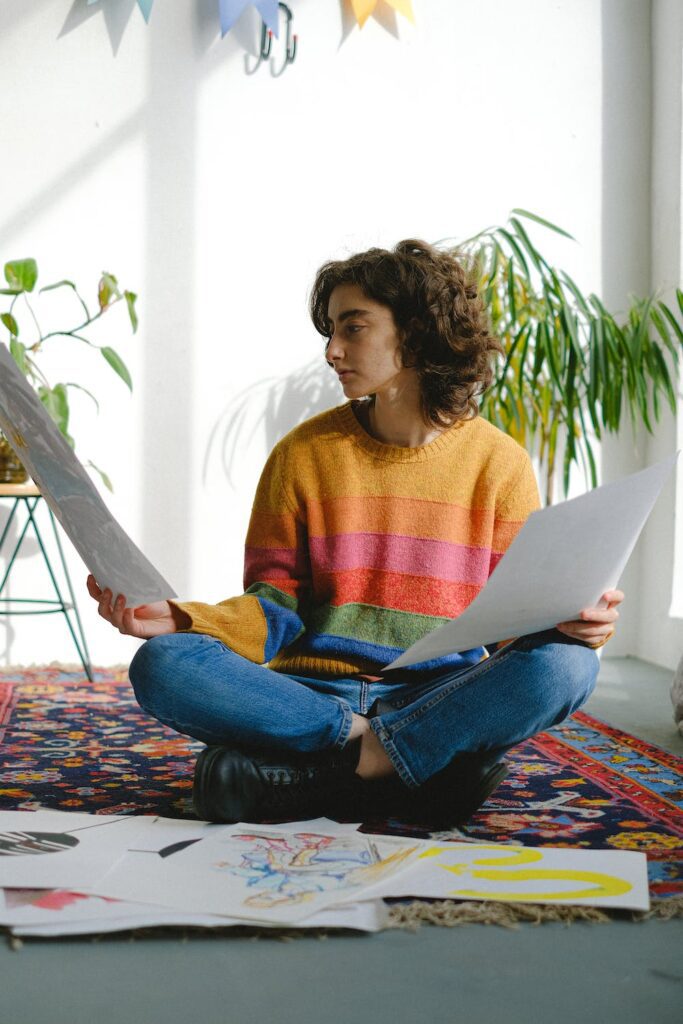
How To Write Your First Elevator Pitch as an Artist


Have you ever found yourself in a brief encounter where you had a chance to share your art with someone who could be a game-changer for your career? It may be a chance to meet with a gallery owner or a fellow artist at a networking event.
In those fleeting moments, how do you effectively capture their attention and convey the essence of your work?
In today’s digital age, where attention spans are shrinking and opportunities arise and vanish in seconds, artists need to master the art of the elevator pitch. This blog post will guide you through creating your first elevator pitch, enabling you to share your vision and capture their attention confidently.
We’ll explore the art of concise communication that shows your talent and leaves a lasting impression on your listeners.
This article will cover the following:
- The power of elevator pitch.
- How to create an elevator pitch.
- Some do’s and don’ts.
- An example that can help you better understand the concept of elevator pitch.
If you don’t know what an elevator pitch is or how is it different from your artist statement, you can read more about it on What is an Elevator Pitch, and How is it Different from the Artist’s Statement?
The Power of Elevator Pitch
Artists have a special ability to communicate feelings, stories, and ideas through their art. But to maximize the influence of your work, you must also be able to clearly and concisely express your objectives.
The artist elevator pitch is a compelling, simplified overview of your artistic practice that may be given during an elevator ride. This powerful tool allows you to leave a lasting impression and opens doors to exciting opportunities.
How to Create a Compelling Elevator Pitch
Crafting an artist’s elevator pitch involves a careful balance between your work and your sales. To create a pitch that resonates with your audience, begin by defining your unique style, inspiration, and artistic goals.
What makes your work stand out? Emphasize the essence of your work to captivate your listener.
Tailor your pitch to suit the interests and preferences of your intended audience. Understanding who you’re speaking to is crucial, whether it’s galleries, potential clients, or fellow artists.
Highlight the benefits and value your art brings to others. Does it evoke emotions, challenge societal norms, or inspire change? Communicate the impact and significance of your work.
Remember to choose your words carefully, keeping your pitch concise, engaging, and easy to remember. Use vivid imagery and storytelling techniques to create a mental picture in the listener’s mind.
Crafting Your Artist Elevator Pitchc
Now that we understand the foundation of an effective elevator pitch let’s dive into the process of creating your own:
Analyze your artistic journey, exploring your strengths, accomplishments, and what sets you apart from others in your field.
Grab your listener’s attention right from the start by creating a compelling opening line that piques curiosity and leaves them wanting to know more.
Weave a brief story that showcases your evolution, highlighting key experiences, inspirations, and milestones that shaped your work.
Clearly articulate how your art enriches the lives of others, whether it’s through visual beauty, emotional impact, thought-provoking messages, or immersive experiences.
Practice delivering your elevator pitch with confidence and authenticity. Seek feedback from peers or mentors, and refine your pitch based on their input.
Elevator Pitch Dos and Don’ts

To ensure your elevator pitch leaves a lasting impression, keep these dos and don’ts in mind:
Dos:
- Be authentic and passionate, letting your true self shine through.
- Adapt your pitch to different situations and audiences, tailoring it accordingly.Keep it concise, ideally under 60 seconds, to maintain interest and leave room for conversation.i
- Practice your pitch until it becomes second nature, allowing for a smooth and confident delivery.
- Be open to feedback and iterate on your pitch as needed, ensuring it remains fresh and relevant.
Don’ts:
- Avoid using jargon or technical terms that may alienate your listener.
- Keep your pitch accessible and easily understandable.
- Don’t focus solely on yourself; instead, emphasize the value and impact your art brings to others.
- Avoid sounding rehearsed or robotic. Maintain a conversational tone and infuse your pitch with genuine enthusiasm.
- Don’t underestimate the power of body language and non-verbal cues. Maintain eye contact, smile, and use gestures to convey confidence and authenticity.
- Avoid overwhelming your listener with too much information. Stick to the most essential aspects of your artistry to create a memorable and impactful pitch.
Putting Your Elevator Pitch into Action
Now that you have crafted your artist elevator pitch, it’s time to implement it. Practice delivering it in various scenarios, such as networking events, gallery openings, or social gatherings. Pay attention to the reactions and responses you receive, and use these interactions as opportunities to refine and enhance your pitch further.

Remember, your elevator pitch is not set in stone. It should evolve and adapt as you grow as an artist.
Example,
Imagine you get a chance to meet the curator of your dream art gallery
Artist: “Hey, my name is Sarah, I’m an artist, and I want to show you some paintings. Can I have your attention for a short while? You’ll like them.
Gallerist: “Sure, I guess. But right now, I’m very busy. Can you provide me with more details?
Artist: “Well, I paint both portraits and landscapes. I’ve been painting for a while, and my friends enjoy my art. People might truly appreciate my art.
That sounds amazing, Sarah; congratulations!” (“You’ve just bored me to death.”)
It’s the hundredth time today they hear someone droning on about being an X with Y art and how people love their art. They require more supporting documentation before considering an artist’s work for representation.
Right Way, consider this instead.
Artist: “Hello, my name is Sarah, and I’m an abstract expressionist painter specializing in large-scale canvases that explore the interplay of colors and emotions. I’m fascinated by the transformative power of art and how it can evoke deep emotional responses in viewers.”
Gallerist: “Interesting. Can you elaborate on your work and describe what makes it special?
Artist: “Yes, for sure! I make dynamic and immersive paintings to surround viewers in a world of intense feelings. I want to express the raw energy and complexity of human experiences through bold brushwork, vivid color palettes, and rich textures. I aim to encourage reflection and a sense of connection to the artwork.
Gallery owner: “I’m curious. Have you got any work samples I could look at?
Do you see what happened there?
The artist introduced themselves clearly by expressing their name and approach. They continued by elaborating on the significance and worth of their work while emphasizing the feelings it arouses and the experience it provides. The artist effectively communicates their artistic vision through the use of precise language and evocative terminology. As the gallerist expresses curiosity in viewing samples of the artist’s work, the dialogue becomes more interesting and suggests that there may be room for additional discussion and contemplation.
Mastering the art of the elevator pitch is a transformative skill for artists. By condensing your artistic vision into a concise and compelling pitch, you can create meaningful connections, attract opportunities, and inspire others with your art. As you continue your journey, remember that your elevator pitch reflects your passion, creativity, and unique perspective. Embrace the process of crafting and refining your pitch, and let it serve as a powerful tool in sharing your art with the world.
In this fast-paced world, where attention is scarce, your elevator pitch can be the key to unlocking doors and opening up new possibilities for your artistic career.
So, confidently step into that metaphorical elevator and captivate the world with your work.
The images in this article are sourced from:
https://www.pexels.com/photo/young-designer-working-with-drawings-sitting-on-floor-5641882/

















Comments 12